El Grifo Ana Muscat Lanzarote Medium Bottle 50 cl. Origin.
Producer.
Name.
El Grifo Ana.
Variety.
Country of origin.
Region of origin.
Appellation of origin.
(UE)401/2010 Certification.
Denominación de Origen Protegida (D.O.P.)
Denominación de Origen (D.O.)
D.O. Lanzarote.
Production region.
The production region of D.O. Lanzarote is located in 7 municipios de la isla de Lanzarote, en las Islas Canarias, España: Arrecife, San Bartolomé, Tías, Tinajo, Haría, Yaiza y Teguise, si bien destacan como principales parajes vitivinícolas los de La Geria, Tías-Masdache, San Bartolomé, Tinajo y Ye-Lajares.
Weight.
1.000 gr.
EAN.
8412204001493
Producer |
|
Name |
El Grifo Ana. |
Variety |
|
Country of origin |
|
Region of origin |
|
Appellation of origin |
|
(UE)401/2010 Certification |
Denominación de Origen Protegida (D.O.P.) |
Production region |
The production region of D.O. Lanzarote is located in 7 municipios de la isla de Lanzarote, en las Islas Canarias, España: Arrecife, San Bartolomé, Tías, Tinajo, Haría, Yaiza y Teguise, si bien destacan como principales parajes vitivinícolas los de La Geria, Tías-Masdache, San Bartolomé, Tinajo y Ye-Lajares. |
Weight |
1.000 gr. |
EAN |
8412204001493 |
El Grifo Ana Muscat Lanzarote Medium Bottle 50 cl. Data sheet.
Typology.
Fortified wine.
D.O. Lanzarote.
Variety.
Format.
Medium Bottle.
Capacity.
50 cl.
Alcohol content.
14% Vol.
Weight.
1.000 gr.
Visual tasting note.
Sparkly, Amber shades, Iodized tone.
Olfactory tasting note.
Complex, Raisins, Floral, Overripe fruits, Dried fruits.
Tasting note.
Concentrated, Sweet, Good step.
Recommended pairing.
Desserts, Table tops, Intense cheeses, Foie gras, Accompanying aromatic coffees.
Consumption temperature.
12ºC - 18ºC.
Consumption.
It is recommended to drink in moderation and demonstrate a responsible consumption of alcoholic beverages.
Special Format.
Medium Bottle.
Typology |
|
Variety |
|
Format |
Medium Bottle. |
Capacity |
50 cl. |
Alcohol content |
14% Vol. |
Weight |
1.000 gr. |
Visual tasting note |
Sparkly, Amber shades, Iodized tone. |
Olfactory tasting note |
Complex, Raisins, Floral, Overripe fruits, Dried fruits. |
Tasting note |
Concentrated, Sweet, Good step. |
Recommended pairing |
Desserts, Table tops, Intense cheeses, Foie gras, Accompanying aromatic coffees. |
Consumption temperature |
12ºC - 18ºC. |
Consumption |
It is recommended to drink in moderation and demonstrate a responsible consumption of alcoholic beverages. |
Special Format |
Medium Bottle. |
El Grifo Ana Muscat Lanzarote Medium Bottle 50 cl. Description.
Comments.
46 Customer reviews.
Customers rating.
Product reference.
WAN4571231
EAN.
8412204001493
Accessories.
This product is provided in the conditions and format in which it is marketed at the current time. In cases where the product includes an additional packaging, box and/or case, These accessories will be included in the shipment as long as they comply with the dimensions of the special packaging adapted and approved for the transport of beverages.
In general, the images of the products that we publish on our website are only relevant for graphic purposes. The images do not show other accessories such as additional packaging (box, case, etc.) or promotional elements that may occasionally be included by the manufacturer along with the product. If you wish, we can inform you about the additional packaging, elements and accessories included with the product at the current time.
Weight.
1.000 gr.
Actual price.
28,95 €
Minimum order quantity.
1 Unit.
Shipping deadline.
 Spain: 4,90 € (Up to 10Kg/6 bottles)
Spain: 4,90 € (Up to 10Kg/6 bottles)
Delivery term: Information and prices.
Storage position.
Lateral position, horizontal bottle.
Storage temperature.
Store at a constant temperature between 10-17ºC.
Humidity should be constant around 60-80%.
Recommendations.
Keep preferably away from light.
Description.
 Español [ ES ]
Español [ ES ]Comments |
46 Customer reviews. |
Customers rating |
|
Product reference |
WAN4571231 |
EAN |
8412204001493 |
Accessories |
This product is provided in the conditions and format in which it is marketed at the current time. In cases where the product includes an additional packaging, box and/or case, These accessories will be included in the shipment as long as they comply with the dimensions of the special packaging adapted and approved for the transport of beverages. |
Weight |
1.000 gr. |
Actual price |
28,95 € |
Minimum order quantity |
1 Unit. |
Shipping deadline |
|
Storage position |
Lateral position, horizontal bottle. |
Storage temperature |
Store at a constant temperature between 10-17ºC. |
Recommendations |
Keep preferably away from light. |
Description |
PLEASE NOTE: Our team is currently working on the translation of this information. You can check all these details in your language in the coming days. For additional and accurate information, please refer to the original version of this content. Our team provides this information and details in Español language. In case of doubt, misunderstanding or misreading about the content of this information you should refer to the original version of this page or contact our customer service team.  Español [ ES ] Español [ ES ]La bodega más antigua de Canarias, entre los diez más antiguos de España, familiar desde 1775. Las tareas de la viña se realizan manualmente. |
El Grifo Ana Muscat Lanzarote Medium Bottle 50 cl. Legal notice.
Please keep in mind.
The information provided and referred to the product features and details has been provided by the expert, manufacturer or producer or published on the official sites. In no case can it be considered as assessment made by our team, unless expressly stated otherwise.
We suggest you to refer to the comments and reviews posted by our customers and users to expand and contrast this information.
Misreading.
Our team provides this information and details in ESPAÑOL language.
If you browse in another language note that the information contained may have been translated from the original language through an automated real-time process that has not been supervised by our human team.
In case of doubt, misunderstanding or misreading about the content of this information you should refer to the original version of this page or contact our customer service team.
Product image.
The product image or its label is only relevant for graphic purposes, so it may not match the identification of the vintage or other features and details of the product for sale. This product is provided in the conditions and format in which it is marketed at the current time.
This product is not identified or supplied in a specific vintage. The product image and label may not match the vintage identification or other characteristics and details of the product for sale.
Accessories.
This product is provided in the conditions and format in which it is marketed at the current time. In cases where the product includes an additional packaging, box and/or case, These accessories will be included in the shipment as long as they comply with the dimensions of the special packaging adapted and approved for the transport of beverages.
In general, the images of the products that we publish on our website are only relevant for graphic purposes. The images do not show other accessories such as additional packaging (box, case, etc.) or promotional elements that may occasionally be included by the manufacturer along with the product. If you wish, we can inform you about the additional packaging, elements and accessories included with the product at the current time.
Country of origin.
Spain. This product is shipped from Spain.
Legal Notice.
It is against the law to sell or supply alcohol to, or to obtain alcohol on behalf of a person under the age of 18 years.
If you are not more than 18 years old, you must leave this website.
Shipping deadline.
 Spain: 4,90 € (Up to 10Kg/6 bottles)
Spain: 4,90 € (Up to 10Kg/6 bottles)
Delivery term: Information and prices.
Return policy.
Return policy.
Last update: Monday, 22 Jan 2024
For further information: Terms and conditions of the service.
Please keep in mind |
The information provided and referred to the product features and details has been provided by the expert, manufacturer or producer or published on the official sites. In no case can it be considered as assessment made by our team, unless expressly stated otherwise. |
Misreading |
Our team provides this information and details in ESPAÑOL language. |
Product image |
The product image or its label is only relevant for graphic purposes, so it may not match the identification of the vintage or other features and details of the product for sale. This product is provided in the conditions and format in which it is marketed at the current time. |
Accessories |
This product is provided in the conditions and format in which it is marketed at the current time. In cases where the product includes an additional packaging, box and/or case, These accessories will be included in the shipment as long as they comply with the dimensions of the special packaging adapted and approved for the transport of beverages. |
Country of origin |
Spain. This product is shipped from Spain. |
Legal Notice |
It is against the law to sell or supply alcohol to, or to obtain alcohol on behalf of a person under the age of 18 years. |
Shipping deadline |
|
Return policy |
Return policy. |
46 Reviews of customers and website users. ( During the last 90 days )
El Grifo by PrivateCeller.com
Bodegas El Grifo: Brand.
 Español [ ES ]
Español [ ES ]De las más antiguas.
La bodega más antigua de Canarias y entre las diez más antiguas de España. Elabora vinos ininterrumpidamente desde 1775 en la misma bodega de El Grifo. Ha pertenecido a tres familias sucesivas: Los Ribera, los De Castro y, desde 1880, a la familia actual, descendiente de Manuel García Durán. Situada en nuestra finca El Grifo. Viñedo familiar: 50 Hectáreas. Las labores de la viña se realizan manualmente. La uva entra en bodega en cajas de 20 kg. Las instalaciones son modernas pero la uva es la protagonista. Elaboración y embotellado en la Propiedad. Denominación de Origen Lanzarote.
Evolución.
Tras la erupción de 1730-1736, la zona central de la Isla, la más fértil, quedó cubierta por la lava y la arena volcánica. Poco tiempo después comenzó a plantarse la viña y árboles frutales, bien apartando las arenas, bien haciendo agujeros en la lava, “chabocos”, hasta alcanzar la tierra vegetal. El lagar cubierto data de 1775, como se deduce de la inscripción fundacional, y fue levantado por el Venerable Beneficiado de la iglesia parroquial de Teguise D. Antonio de Torres Ribera. El Grifo, actualmente finca de 40 Has., fue una de sus propiedades. Antonio de Torres y Ribera heredó algunas parcelas de El Grifo, que poseían sus padres con anterioridad a las erupciones de 1730, y fue completando la finca y la plantó viña. También edificó, además del lagar, la primitiva bodega, que hoy es Museo, y la casa. Nombró heredero a su sobrino Bartolomé de Torres con la condición de que éste instituyese en el Grifo una capellanía de misas rezadas. En 1803 falleció Antonio de Torres, sucediéndole su sobrino. Otra sobrina de D. Antonio, Gabriela de Torres, que nació y vivía en Cuba, reclamó judicialmente en el juzgado de Arrecife la propiedad de la finca a su primo Bartolomé, alegando el incumplimiento de lo ordenado por su tío en el testamento.
La segunda familia.
Temiendo una condena judicial, que finalmente se produjo, Bartolomé de Torres vendió El Grifo de modo subrepticio, hoy diríamos que en alzamiento de bienes, a la familia De Castro, entre 1817 y 1824. Dependiendo de la fecha, cuya exactitud desconocemos, la finca habría sido adquirida por Ginés de Castro Estévez, Capitán de milicias, que murió en 1819, o por la herencia yacente que administraba su hijo, Ginés de Castro y Álvarez, Coronel de Milicias y dos veces alcalde de Arrecife. Ginés de Castro y Álvarez fue el también el autor de la crónica de la erupción de 1824, cuando era Alcalde Mayor de la Isla, en la que menciona El Grifo como lugar desde donde se oyeron ruidos y temblores subterráneos. Administró El Grifo hasta su muerte en 1833. A la muerte de su hermano Ginés en 1833, dividieron la herencia paterna entre las dos hermanas supervivientes: Antonia y Rosalía de Castro y Álvarez. La primera, Antonia, casó con Policarpo de Medinilla, caballero de la Orden de Cristo y cónsul de Portugal en Canarias. Tuvo por hijo, a José de Medinilla y Castro, alcalde que fue también de Arrecife. El hijo de José, Policarpo Medinilla Morales, vendió a Manuel García Durán, bisabuelo de los actuales propietarios su participación en El Grifo en los años setenta del siglo XIX. La segunda hermana, Rosalía de Castro, casó con el subteniente Barreto, que murió muy pronto. Rosalía cuando enviudó se trasladó de San Bartolomé a El Grifo, donde murió en 1868, a los 85 años. Su hija, María del Carmen Barreto y Castro, casada con José Lubary, murió antes que su propia madre, por lo que heredaron a Rosalía sus nietos. Éstos fueron vendiendo sus participaciones al indicado Manuel García Durán durante los años setenta del siglo XIX.
La familia actual.
Manuel García Durán, a su vuelta de Puerto Rico, donde administró una propiedad agrícola, fue adquiriendo a los herederos de las hermanas Antonia y Rosalía de Castro sus participaciones en El Grifo. El proceso de compra lo realizó en la década 1870-1880. Le pudo impulsar a la compra el hecho de que había heredado de su padre, Gonzalo García Durán, unas fincas en el mismo Grifo. Conservamos varios de sus libros de cuentas de finales del S. XIX y comienzos del S. XX, por los que conocemos dónde y a quién vendía su vino, que en pequeña cantidad también exportó a Cuba y Puerto Rico, los precios y los volúmenes de cosecha de algunos años. En la bodega conservamos vinos elaborados por él. Murió en 1912.
Heredó El Grifo su hija Manuela García [-Durán] Parrilla, casada con el médico lanzaroteño Fermín Rodríguez Bethencourt. A su muerte, y tras un interregno en que dirigió la bodega desde Madrid uno de sus hijos, el Doctor Manuel R. Bethencourt, recayó la propiedad en la hija de los citados Manuela y Fermín, y hermana, por tanto, del Doctor Bethencourt, Antonia Rodríguez-Bethencourt, casada con Juan José Otamendi Soravilla, padres de los dos hermanos propietarios. En resumen: Los dos de Torres, tío y sobrino, poseyeron la bodega durante unos 45 años. El tío, el Venerable D. Antonio de Torres es el que hizo la mayoría de las edificaciones antiguas. La familia de Castro, poseyó después El Grifo entre 1820 y 1880, unos 60 años y tres generaciones. Finalmente, la familia actual la posee desde 1880 en cinco generaciones, contando con la de Gonzalo García Durán, que poseía fincas hoy integradas en el Grifo, padre de Manuel García Durán, tatarabuelo y bisabuelo, respectivamente, de los actuales propietarios. Éstos han construido la bodega actual junto a las edificaciones antiguas, que se han preservado como Museo.
El Grifo Ana Muscat Lanzarote Medium Bottle 50 cl.
Additional information.
«El Grifo Ana Lanzarote» is produced by El Grifo (Bodegas El Grifo). «El Grifo Ana Lanzarote» is monovarietal, made only with the grape variety Muscat, 100% Muscat. «El Grifo Ana Lanzarote» is a product from Spain. The production region of «El Grifo Ana Lanzarote» is Canary Islands. It is certified with D.O. Lanzarote. The production region of D.O. Lanzarote is located in 7 municipios de la isla de Lanzarote, en las Islas Canarias, España: Arrecife, San Bartolomé, Tías, Tinajo, Haría, Yaiza y Teguise, si bien destacan como principales parajes vitivinícolas los de La Geria, Tías-Masdache, San Bartolomé, Tinajo y Ye-Lajares. The weight of «El Grifo Ana Lanzarote» is 1.000 grams. «El Grifo Ana Lanzarote» is identified and marketed with the barcode EAN 8412204001493.
«El Grifo Ana Lanzarote» belongs to the Fortified wine category, Fortified wine Appellation of origin D.O. Lanzarote. «El Grifo Ana Lanzarote» is monovarietal, made only with the grape variety Muscat, 100% Muscat. «El Grifo Ana Lanzarote» is marketed in medium bottle 50 cl format. The alcohol content of «El Grifo Ana Lanzarote» is 14% Vol. The weight of «El Grifo Ana Lanzarote» is 1.000 grams. Regarding the tasting of «El Grifo Ana Lanzarote», the notes sparkly, amber shades and iodized tone stand out in its visual phase. Among the predominant notes of the olfactory tasting are complex, raisins, floral, overripe fruits and dried fruits. Finally, The tasting of «El Grifo Ana Lanzarote» in the taste phase stands out with concentrated, sweet and good step. It is recommended to pair «El Grifo Ana Lanzarote» with desserts, table tops, intense cheeses, foie gras and accompanying aromatic coffees. The optimum temperature to consume «El Grifo Ana Lanzarote» is 12ºC - 18ºC.
A total of 46 valuations have been made about «El Grifo Ana Lanzarote» in PrivateCeller.com. Consumers and users from PrivateCeller.com rated «El Grifo Ana Lanzarote» with an average score of 4.91 out of 5. «El Grifo Ana Lanzarote» is identified and marketed with the barcode EAN 8412204001493. The weight of «El Grifo Ana Lanzarote» is 1.000 grams. The final sale price of «El Grifo Ana Lanzarote» is 28,95 € in PrivateCeller.com.
The information provided and referred to the product features and details has been provided by the expert, manufacturer or producer or published on the official sites. In no case can it be considered as assessment made by our team, unless expressly stated otherwise. We suggest you to refer to the comments and reviews posted by our customers and users to expand and contrast this information. The product image or its label is only relevant for graphic purposes, so it may not match the identification of the vintage or other features and details of the product for sale. This product is provided in the conditions and format in which it is marketed at the current time. Spain. This product is shipped from Spain.
Appellation of origin:
D.O. Lanzarote.
El Grifo Ana Muscat Lanzarote Medium Bottle 50 cl.
 Español [ ES ]
Español [ ES ]El Consejo Regulador.
Habiendo obtenido la denominación el 14 de diciembre de 1.993, el Consejo Regulador de la Denominación de Origen Vinos de Lanzarote tiene la misión de dar la certificación de que los vinos que llevan su sello cumplen con todos los requisitos de origen y calidad para poder etiquetarse como tales. Los controles se efectúan desde el viñedo hasta la comercialización, con estrictos exámenes analíticos y organolépticos, certificando su aprobado con una contraetiqueta numerada y un sello. A partir de la publicación en el B.O.C. nº 33, el 14 de febrero de 2008, de los estatutos del Consejo Regulador de la Denominación de Origen Vinos de Lanzarote, éste se convierte en una Corporación de Derecho Público, con personalidad jurídica propia y capacidad propia para llevar a cabo sus fines públicos y privados siendo éstos la representación, defensa, garantía, investigación y desarrollo de mercados y promoción, tanto de los vinos amparados como del nivel de protección, así como la prestación de servicios relacionados con estas actividades. El control y seguridad alimentaria de los vinos de Canarias en general, y de Lanzarote en particular, es asumida por el Instituto Canario de Calidad Agroalimentario, organismo público adscrito a la Consejería de Agricultura, Ganadería y Pesca del Gobierno de Canarias.
Los viñedos.
Sobre el centro de la isla se extiende una vasta extensión de lava negra solidificada. Allí no puede crecer malas hierbas ni vegetación, pero los bordes exteriores del campo de lava proporcionan un terroir de viñedo único, rico en cenizas volcánicas, conocidas como lapilli, donde las vides se plantan en hoyos o zanjas. Sus raíces alcanzan la tierra que hay debajo de la ceniza. Cada hueco está rodeado por un abrigo de piedras para protegerlo de los vientos predominantes que procedentes del Sahara. La uva que más se planta es la Malvasía que ocupa más de las tres cuartas partes de los viñedos. Los viñedos se extienden en más de 3300 hectáreas por los siete municipios de la isla de Lanzarote. Destacan como principales parajes vitivinícolas los de La Geria, Tías-Masdache, San Bartolomé, Tinajo y Ye-Lajares. La gran mayoría se concentran en la zona central y meridional alrededor del Parque Natural de La Geria. La separación entre vides, en las zonas protegidas por la Denominación de Origen, está regulada, no estando permitido superar las 2000 cepas por hectárea, llegando a veces a poco más de 200. El resultado de esta regulación es un rendimiento extremadamente bajo, con una escasa producción, pero una calidad insuperable.
Las uvas.
En la isla de Lanzarote se elabora una gran variedad de vinos, tanto blancos, como tintos, rosados y espumosos, para lo que se utilizan las uvas blancas listán blanco, burrablanca, breval, pedro ximénez, torrontés, malvasía volcánica, moscatel de Alejandría, vijariego o diego, albillo, gual y verdello. Las variedades tintas son la listán negra, negramoll o mulata, malvasía rosada, tintilla, bastardo negro o baboso negro, cabernet sauvignon, merlot, moscatel negro, pinot noir, ruby cabernet, syrah, tempranillo y vijariego negro. La variedad malvasía, aunque de origen griego, llegó a las Islas Canarias en el siglo XVI procedente de Madeira, y se ha convertido en la principal variedad de uva cultivada en Lanzarote. Es una variedad con la que se hace vino desde hace muchos siglos. En Lanzarote existe una vid diferenciada llamada malvasía volcánica, se caracteriza por ser una planta rastrera ideal para esconderse del viento tras los zocos de piedra de los hoyos lanzaroteños. Es poco productiva y de vendimia temprana su recolección comienza a finales del mes de julio.
Los vinos.
Los vinos blancos de la Denominación de Origen Lanzarote son límpidos y brillantes, de color amarillo pajizo a verdoso, con una nariz frutal y floral de intensidad media y una boca fresca y persistente. Los rosados son también límpidos y brillantes, color piel de cebolla a rosa frambuesa, nariz frutal de intensidad media y una boca equilibrada, agradable y con un final afrutado. En el caso de los tintos tenemos una fase visual que va desde el púrpura al rubí, pasando por granate y cereza, ofrecen aromas frutales y/o florales y fondo mineral, siendo suaves y ligeros en boca, equilibrados, con un final muy agradable y buena persistencia. Los vinos de uva sobremadura presentan un color amarillo oro-dorado, para variedades blancas, o morado para variedades tintas, muy aromáticos y con una boca untuosa y frutal. Los espumosos ofrecen una burbuja fina corona constante, un aroma limpio de fruta fresca y flores blancas, con notas de panadería, frutal para los rosados. En boca son muy agradables, finos y elegantes. Por último los vinos de licor tienen un color amarillo pajizo a ámbar, para los blancos; de color piel de cebolla a rosa frambuesa pudiendo presentar ribetes violáceos para los rosados y color del púrpura al rubí pasando por granate y cereza en los tintos. Son vinos francos y presentan aromas frutales y florales, a frutas maduras, pasificadas. En boca es un vino denso, sabroso, equilibrado y muy complejo.
Fortified wine D.O. Lanzarote
Product Selection Fortified wine D.O. Lanzarote.
El Grifo Ana Muscat Lanzarote Medium Bottle 50 cl.
Variety:
Muscat.
El Grifo Ana Muscat Lanzarote Medium Bottle 50 cl.
 Español [ ES ]
Español [ ES ]Origen.
Hay teorías que remontan el origen de los ancestros de la moscatel en el antiguo Egipto y en los comienzos de la antigua Persia (c. 3000-1000 a. C.), aunque algunos ampelógrafos, como Pierre Galet, creen que la familia de la variedad moscatel fue propagada durante el periodo de la antigüedad clásica (c. 800 a.C. a 600 a. C.) por griegos y romanos. Sin embargo, aunque que la producción doméstica de vino tiene una larga historia en el antiguo Egipto y en Persia y a que los escritores clásicos como Columella y Plinio el Viejo describieron como moscatel a variedades como la anathelicon moschaton y apianae, diciendo que eran muy dulces y atractivas para las abejas (en latín apis), no hay evidencias históricas sólidas de que esas antiguas uvas de vino fueran miembros de la familia moscatel.
Características.
La familia moscatel es muy numerosa, con más de 200 miembros distintos,sin embargo, a pesar de esta diversidad solo un puñado de variedades de uva moscatel son ampliamente utilizadas en la producción de vino. Entre ellas está la moscatel de grano menudo, la moscatel de Alejandría, la moscatel de Hamburgo y la muscat ottonel. Las cepas de variedad moscatel son poco vigorosas y de porte erguido, desborre medio y maduración más bien tardía, dando rendimientos bajos. Su maduración es variable, existiendo muchos racimos que retrasan esta maduración, especialmente si la producción es elevada, maduran en función de la ubicación y altimetría de la parcela donde estén plantadas. Los racimos son grandes, poco compactos y heterogéneo, tanto en tamaño de baya como en el color del hollejo. Las uvas son grandes de forma circular, pero con tendencia a sección longitudinal elíptica, con una pulpa blanda, muy jugosa, con sabor característico amoscatelado. Su hollejo es grueso y consistente. Si hay algo que caracteriza esta variedad, esto es, sin duda, su elevado grado de azúcar, al tiempo que su fuerte aroma frutal. Las cepas de moscatel requieren de temperaturas elevadas tras el enverado para poder alcanzar una maduración adecuada, resisten bien a la sequía y se adaptan perfectamente a distintos tipos de suelos. Las temperaturas bajas producen que su madera no agoste bien, adaptándose bien a podas cortas en vaso. Si las podas son largas puede provocar un exceso de producción lo que daría como consecuencia una reducción en la calidad perdiendo parte de su tipicidad y aromas. Es muy sensible al oídio y al mildiu, también al frío y sensible a la polilla del racimo, a los insectos y al frío.
Zonas de cultivo.
Es una cepa típicamente mediterránea, que precisa sol y la influencia del mar por lo que se cultiva sobre todo en países que cumplan con esa característica. Existen viñedos de uva moscatel en Austria, Chipre, España, Grecia, Italia, Malta y Portugal. En España su cultivo por excelencia es en Valencia, Alicante, Canarias y Málaga.
Vinos.
Los vinos de moscatel tienen una potente aromaticidad, dando lugar a buenos caldos en suelos calizos y excelentes en silícicos. Usada como uva de mesa por su sabor amoscatelado, pulpa firme y hollejo de espesor medio. Además de utilizarse como uva de mesa produce elegantes mistelas y buenos blancos secos, dulces y espumosos, todos ellos con aromas potentes, elegantes y florales. También se adicionan en coupages para aromatizar el conjunto. En Málaga se utiliza para elaborar vinos aromáticos.
Fortified wine Muscat
Product Selection Fortified wine Muscat.
El Grifo Ana Muscat Lanzarote Medium Bottle 50 cl.
Data sheet.
El Grifo Ana Muscat Lanzarote Medium Bottle 50 cl.
Fortified wine. El Grifo. Ana. D.O. Lanzarote. Canary Islands. Spain. Muscat. Medium Bottle. 50 cl..
Variety.
Country of origin.
Region of origin.
Appellation of origin.
Format.
Medium Bottle.
Capacity.
50 cl.
Alcohol content.
14% Vol.
Visual tasting note.
Sparkly, Amber shades, Iodized tone.
Olfactory tasting note.
Complex, Raisins, Floral, Overripe fruits, Dried fruits.
Tasting note.
Concentrated, Sweet, Good step.
Recommended pairing.
Desserts, Table tops, Intense cheeses, Foie gras, Accompanying aromatic coffees.
Consumption temperature.
12ºC - 18ºC.
Special Format.
Medium Bottle.
Typology.
Fortified wine.
D.O. Lanzarote.
Producer.
Name.
El Grifo Ana.
Weight.
1.000 gr.
EAN.
8412204001493
Comments.
46 Customer reviews.
Customers rating.
Product reference.
WAN4571231
Actual price.
28,95 €
Minimum order quantity.
1 Unit.
Shipping deadline.
 Spain: 4,90 € (Up to 10Kg/6 bottles)
Spain: 4,90 € (Up to 10Kg/6 bottles)
Delivery term: Information and prices.
Please keep in mind.
The information provided and referred to the product features and details has been provided by the expert, manufacturer or producer or published on the official sites. In no case can it be considered as assessment made by our team, unless expressly stated otherwise.
We suggest you to refer to the comments and reviews posted by our customers and users to expand and contrast this information.
Misreading.
Our team provides this information and details in ESPAÑOL language.
If you browse in another language note that the information contained may have been translated from the original language through an automated real-time process that has not been supervised by our human team.
In case of doubt, misunderstanding or misreading about the content of this information you should refer to the original version of this page or contact our customer service team.
Product image.
The product image or its label is only relevant for graphic purposes, so it may not match the identification of the vintage or other features and details of the product for sale. This product is provided in the conditions and format in which it is marketed at the current time.
This product is not identified or supplied in a specific vintage. The product image and label may not match the vintage identification or other characteristics and details of the product for sale.
Description.
 Español [ ES ]
Español [ ES ]Return policy.
Return policy.
Last update: Monday, 22 Jan 2024
For further information: Terms and conditions of the service.
Country of origin.
Spain. This product is shipped from Spain.
(UE)401/2010 Certification.
Denominación de Origen Protegida (D.O.P.)
Denominación de Origen (D.O.)
D.O. Lanzarote.
Production region.
The production region of D.O. Lanzarote is located in 7 municipios de la isla de Lanzarote, en las Islas Canarias, España: Arrecife, San Bartolomé, Tías, Tinajo, Haría, Yaiza y Teguise, si bien destacan como principales parajes vitivinícolas los de La Geria, Tías-Masdache, San Bartolomé, Tinajo y Ye-Lajares.
Storage position.
Lateral position, horizontal bottle.
Storage temperature.
Store at a constant temperature between 10-17ºC.
Humidity should be constant around 60-80%.
Recommendations.
Keep preferably away from light.
Accessories.
This product is provided in the conditions and format in which it is marketed at the current time. In cases where the product includes an additional packaging, box and/or case, These accessories will be included in the shipment as long as they comply with the dimensions of the special packaging adapted and approved for the transport of beverages.
In general, the images of the products that we publish on our website are only relevant for graphic purposes. The images do not show other accessories such as additional packaging (box, case, etc.) or promotional elements that may occasionally be included by the manufacturer along with the product. If you wish, we can inform you about the additional packaging, elements and accessories included with the product at the current time.
Legal Notice.
It is against the law to sell or supply alcohol to, or to obtain alcohol on behalf of a person under the age of 18 years.
If you are not more than 18 years old, you must leave this website.
Consumption.
It is recommended to drink in moderation and demonstrate a responsible consumption of alcoholic beverages.
Variety |
|
Country of origin |
|
Region of origin |
|
Appellation of origin |
|
Format |
Medium Bottle. |
Capacity |
50 cl. |
Alcohol content |
14% Vol. |
Visual tasting note |
Sparkly, Amber shades, Iodized tone. |
Olfactory tasting note |
Complex, Raisins, Floral, Overripe fruits, Dried fruits. |
Tasting note |
Concentrated, Sweet, Good step. |
Recommended pairing |
Desserts, Table tops, Intense cheeses, Foie gras, Accompanying aromatic coffees. |
Consumption temperature |
12ºC - 18ºC. |
Special Format |
Medium Bottle. |
Typology |
|
Producer |
|
Name |
El Grifo Ana. |
Weight |
1.000 gr. |
EAN |
8412204001493 |
Comments |
46 Customer reviews. |
Customers rating |
|
Product reference |
WAN4571231 |
Actual price |
28,95 € |
Minimum order quantity |
1 Unit. |
Shipping deadline |
|
Please keep in mind |
The information provided and referred to the product features and details has been provided by the expert, manufacturer or producer or published on the official sites. In no case can it be considered as assessment made by our team, unless expressly stated otherwise. |
Misreading |
Our team provides this information and details in ESPAÑOL language. |
Product image |
The product image or its label is only relevant for graphic purposes, so it may not match the identification of the vintage or other features and details of the product for sale. This product is provided in the conditions and format in which it is marketed at the current time. |
Description |
PLEASE NOTE: Our team is currently working on the translation of this information. You can check all these details in your language in the coming days. For additional and accurate information, please refer to the original version of this content. Our team provides this information and details in Español language. In case of doubt, misunderstanding or misreading about the content of this information you should refer to the original version of this page or contact our customer service team.  Español [ ES ] Español [ ES ]La bodega más antigua de Canarias, entre los diez más antiguos de España, familiar desde 1775. Las tareas de la viña se realizan manualmente.
|
Return policy |
Return policy. |
Country of origin |
Spain. This product is shipped from Spain. |
(UE)401/2010 Certification |
Denominación de Origen Protegida (D.O.P.) |
Production region |
The production region of D.O. Lanzarote is located in 7 municipios de la isla de Lanzarote, en las Islas Canarias, España: Arrecife, San Bartolomé, Tías, Tinajo, Haría, Yaiza y Teguise, si bien destacan como principales parajes vitivinícolas los de La Geria, Tías-Masdache, San Bartolomé, Tinajo y Ye-Lajares. |
Storage position |
Lateral position, horizontal bottle. |
Storage temperature |
Store at a constant temperature between 10-17ºC. |
Recommendations |
Keep preferably away from light. |
Accessories |
This product is provided in the conditions and format in which it is marketed at the current time. In cases where the product includes an additional packaging, box and/or case, These accessories will be included in the shipment as long as they comply with the dimensions of the special packaging adapted and approved for the transport of beverages. |
Legal Notice |
It is against the law to sell or supply alcohol to, or to obtain alcohol on behalf of a person under the age of 18 years. |
Consumption |
It is recommended to drink in moderation and demonstrate a responsible consumption of alcoholic beverages. |

 Italy
Italy France
France Argentina
Argentina United States
United States Australia
Australia Portugal
Portugal Chile
Chile New Zealand
New Zealand South Africa
South Africa





 Germany
Germany Austria
Austria




 Tokaj-Hegyalja
Tokaj-Hegyalja
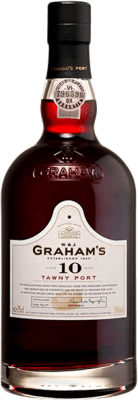








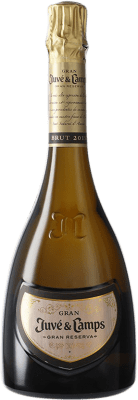
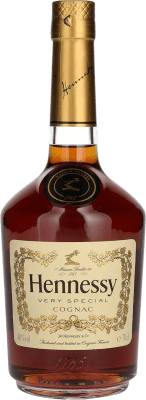


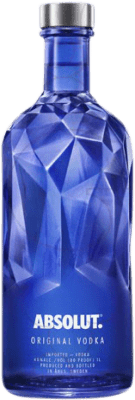


 Français
Français
 Deutsch
Deutsch
 Italiano
Italiano
 Português
Português
 中文
中文
 Русский
Русский
 日本語
日本語
 Belgium
Belgium
 Bulgaria
Bulgaria
 Croatia
Croatia
 Cyprus
Cyprus
 Czech Republic
Czech Republic
 Denmark
Denmark
 Estonia
Estonia
 Finland
Finland
 Greece
Greece
 Ireland
Ireland
 Latvia
Latvia
 Liechtenstein
Liechtenstein
 Lithuania
Lithuania
 Luxembourg
Luxembourg
 Monaco
Monaco
 Netherlands
Netherlands
 Norway
Norway
 Poland
Poland
 Romania
Romania
 San Marino
San Marino
 Slovakia
Slovakia
 Slovenia
Slovenia
 Spain, Balearic Islands
Spain, Balearic Islands
 Spain, Canary Islands
Spain, Canary Islands
 Sweden
Sweden
 Switzerland
Switzerland
 United Kingdom
United Kingdom

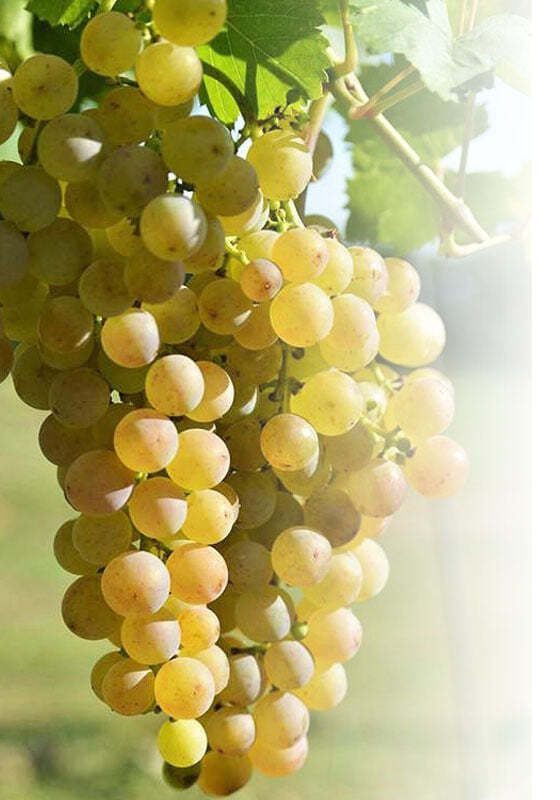
 EUR, Final price!
EUR, Final price!

































Poco común para el rango de precio que tiene, con toques muy típicos. Muy bien vestido
Buen amigo para una velada íntima
Elegante y contundente
Está tan bueno que hemos repetido varias compras en los últimos meses
vino generoso superior. Precio rendimiento superior
Muy rico, también se adapta a la comida más ligera.
Muy bien por el creador de este proyecto. Es genial
Encantador
¡He estado bebiendo este vino generoso durante años y es excelente. Me encantó que estuviera disponible y se lo recomendaría a otros. Me encanta!.
Te gusta o lo odias. No hay término medio. En la calidad todos coinciden: La mejor
Sutil
No dejarlo envejecer.
Todo de un gran generoso. A consumir dentro de los 4 años siguientes.
Buen acabado, muy bien presentado
Vale lo que cuesta
Elaboración de gran calidad, excelente. Resulta fácil de beber. Divertido
Rareza
Es una rareza, pero que rareza, no busquen un generoso fácil ni ágil, para disfrutar sin prisas.
Buenísima calidad
Me recuerda a mis años de juventud en la vendimia de Francia
Tiene todo lo que espero y el precio también está bien
Descubrirlo, hace ya un tiempo, fue una auténtica casualidad. Entonces era mucho menos conocida esta marca
Delicioso.
Es realmente especial y delicioso. Una gran idea para regalo o simplemente para uno mismo.
No es caro